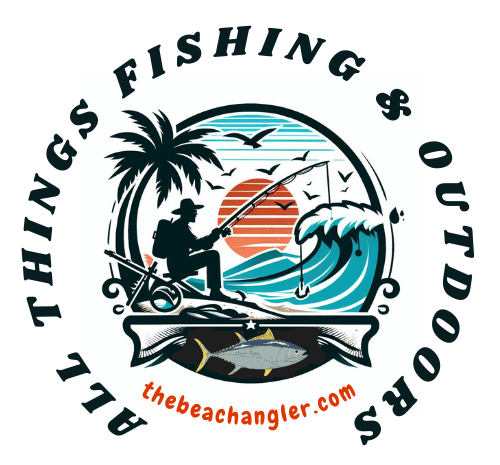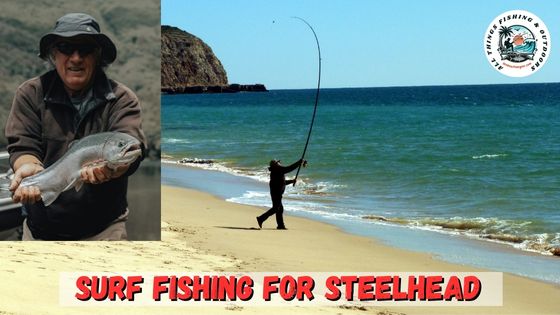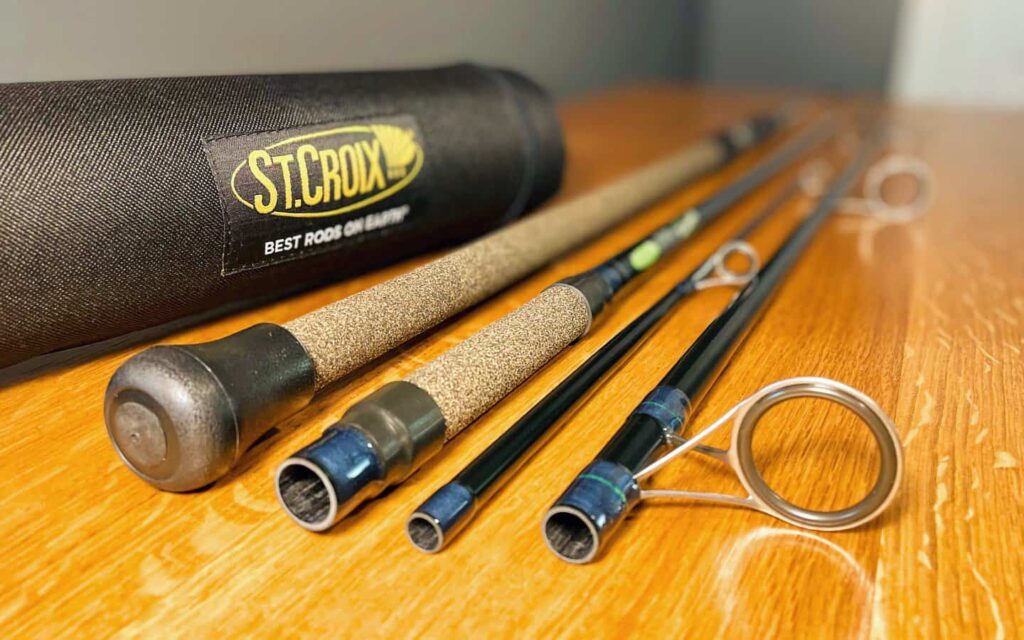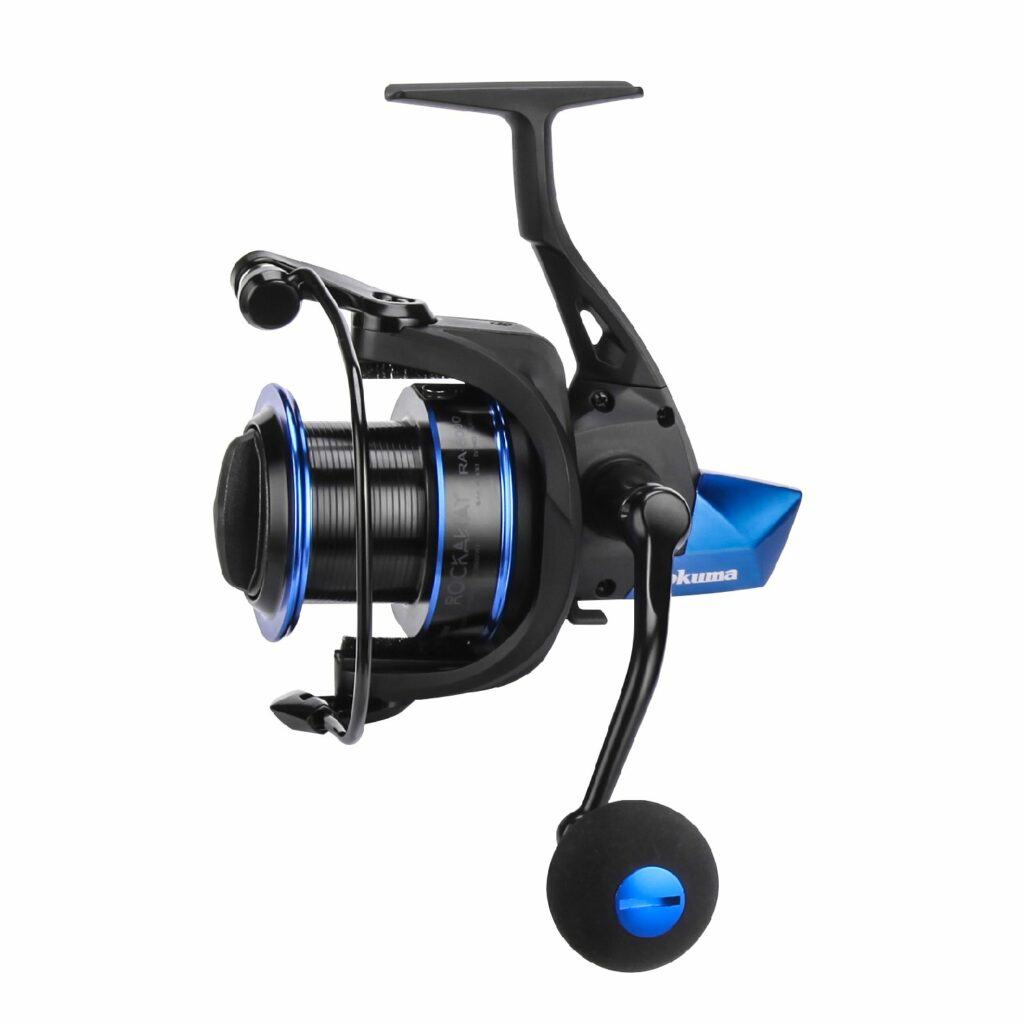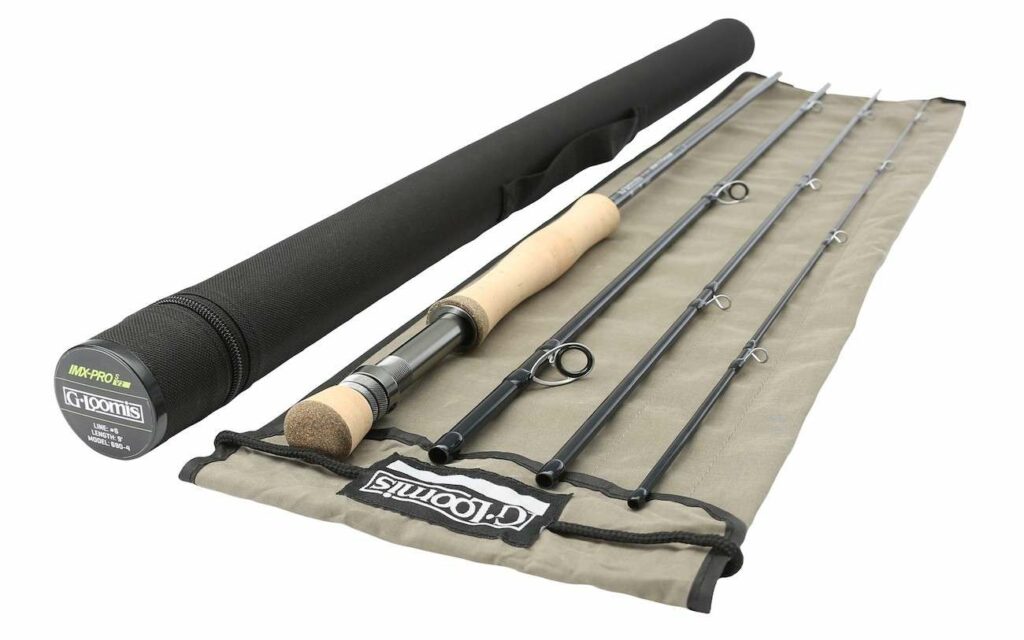Have you ever tried surf fishing for Steelhead? Steelhead trout, also known as ocean-going rainbow trout or sea trout, spend part of their lives in saltwater. And, if you know when and where to look, you can catch them in the surf.
QUICK LOOK:
Steelhead returning to spawning rivers from spending time in the open ocean are powerful and aggressive. They strike with an attitude and provide some great drag-screaming runs. They can be found staging off beaches near river outlets. Gear up with sturdy surf fishing gear, 9 – 12 ft rod, high capacity spinning or casting reel spooled with 12 lb test mono or braid. Grab some natural baits, or lures, and get in on the action. A sport mainly of the Pacific Northwest, don’t overlook the beach of the Great Lakes for some great steelhead action.
Steelhead are anadromous fish, meaning they start their lives in freshwater rivers and streams, then migrate to the ocean to live as adults and feed. After spending up to six years in the ocean, they return to freshwater to spawn.
Steelhead that migrate to the ocean are usually larger than those that stay in freshwater and can weigh up to 50 pounds. Steelhead often feed aggressively on baitfish, shrimp, and other prey along shorelines, especially near their spawning time.
Surf fishing for steelhead is most productive during their return migration to spawning rivers, primarily in the late fall to early spring. The cooler waters during these times seem to provide the ideal conditions for steelhead to feed and prepare to return to the rivers for spawning. Look for them from September through winter and again in spring.
The Adventure of Surf Fishing for Steelhead
Beach steelhead are simply the best steelhead you can hope to catch. After roaming free in the ocean, the fish are at their peak physical condition, beauty, and power. They are not confined to a tributary pool, riffle, or run, where they actually spend little of their adult life.
Hook a steelhead off the beach and you’re hooking into a different beast. A steelhead fresh into nearshore waters—after living a life feeding offshore—has probably never seen a fly. You don’t often see your backing on the rivers or smaller tributaries, but on the beach, you are going to find out what color it is within seconds of most hookups.
Plump, fat, and silver, steelies on the big water can kick your ass in a heartbeat. They’ve been chasing bait and running from predators in the ocean. I’d rather catch one or two steelhead off a lonely beach than a half dozen or more from a tributary pool where the steelhead are exposed and quickly become wary from anglers plopping baits, lures, and flies on their heads
Major Factors for Success when Surf Fishing for Steelhead
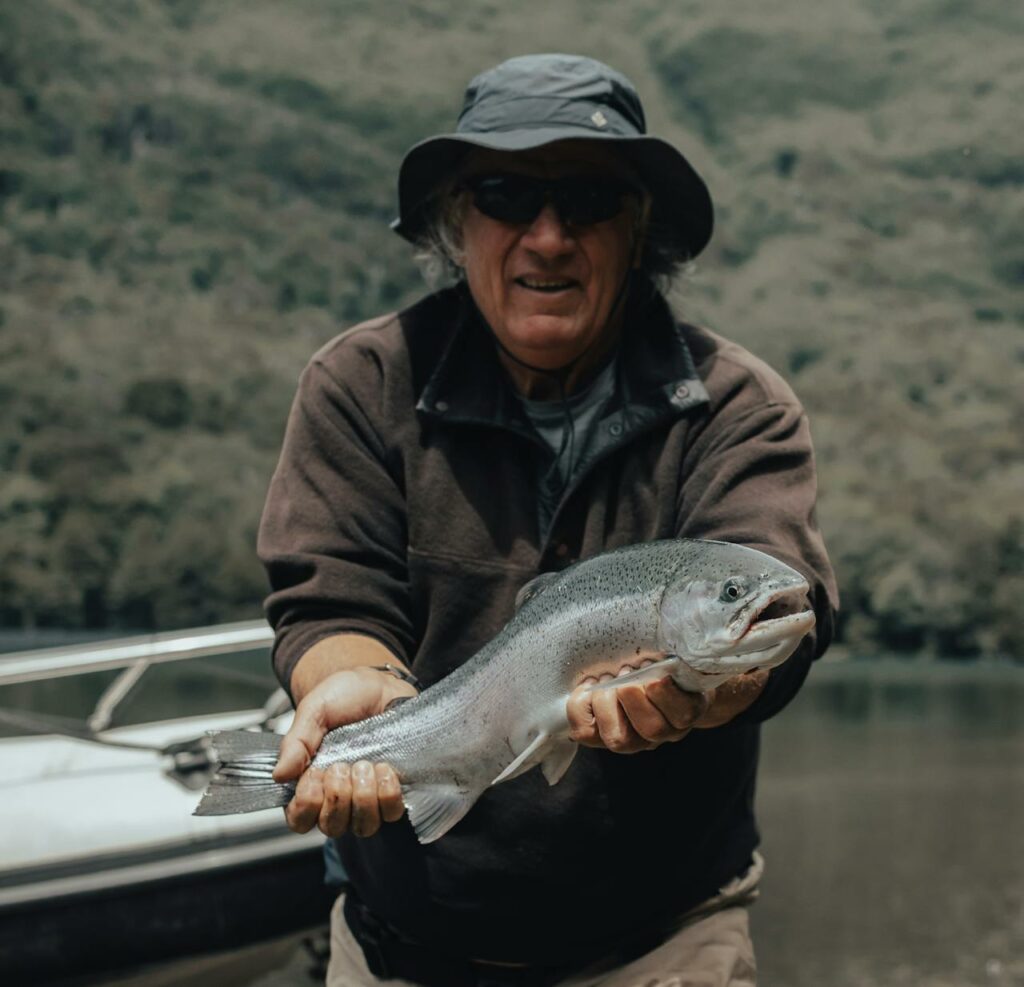
Steelhead can be quite responsive to the times of day and tidal changes. I suggest you keep a detailed log of your fishing sessions.
Not only will this help in identifying patterns over time, but it will also help you craft a strategy for the specific beach you’re fishing.
Such attention to detail ensures you’re fishing at the best possible times for catching steelhead from the beach.
- Tides – Tides play a pivotal role in steelhead behavior. The hours around high tide tend to be the most productive. This is when steelhead move closer to the shoreline, foraging for food stirred up by the incoming waters. Therefore, aligning your surf fishing schedule with the tidal charts will increase your chances of finding and catching steelhead.
- Water Temperature – As soon as lake water temperatures start to drop into the mid-60s in early fall, I start looking for fish on the beaches. They often give themselves away as you look down the beach and see leaping or rolling fish.
- Rivers and Streams – Steelhead are returning to rivers to spawn and, generally, more flow in a river or tributary means there will be more steelhead nosing around nearby beaches. Steelhead can detect and are attracted to this tributary water, and “following the water” will often take you to the fish.
It’s important to note that many steelhead are not “imprinted” on a particular tributary like salmon are, and they don’t swim directly from the open ocean to a particular tributary. They swim miles of shoreline looking for any tributary that has suitable flows.
Essential Gear for Effective Surf Fishing for Steelhead
You need the right gear to succeed at surf fishing for steelhead, which involves distance casting and detecting subtle strikes. If you will be fishing with conventional gear, a medium to medium-heavy rod with a length of 9 to 12 feet provides the necessary leverage for long casts and the sensitivity to feel the steelhead’s bite.
For reels, a durable and smooth-operating spinning or baitcasting reel matched with the rod weight ensures a balanced setup. Choose a reel with a spool capacity of at least 300 yards of 12lb test monofilament line. Load your reel with a 10 to 20-pound test monofilament or braided line for the best combination of strength and castability.
Braided lines are a popular option for their thinness and strength, allowing longer casting distances. However, if you use a braid, you will need a monofilament or fluorocarbon leader between your bait and main line to avoid spooking the fish.
Tackle essentials include a variety of weights to maintain bait presentation in the surf. Pyramid weights anchor well in the sand. Your leaders should be tough and abrasion-resistant, preferably fluorocarbon in the 10 to 20-pound test range for low visibility and strength against the steelhead’s sharp vision and fight.
The selection of hooks, typically sizes 2 to 4, depends on your bait choice. Whether you’re using live bait such as sand shrimp or artificial lures like spinners, spoons, and swim baits that closely match the forage steelhead feed on in the surf environment.
Roe bags or spawn sacks are arguably the best bait when fishing for steelhead. Anglers often use chinook or rainbow trout eggs, tying them into dime-sized spawn sacks and drifting them under a float. Regardless of the time of year, this technique can be deadly. They can be difficult to use in the surf as the wave action can break up the sacks.
Other effective baits include worms, shrimp, and flies. Experimenting with different baits based on water clarity, flow, and seasonal conditions can help you find what works best on any given day.
If you prefer fly fishing, look for longer 9 ft, 8wt saltwater fly rods and reels. The longer, heavier rod will allow for the longer casts you will need when surf fishing for steelhead. And, the larger capacity saltwater fly reels will allow you enough backing to handle the long runs of fresh from the ocean steelhead.
Surf Fishing for Steelhead Tips and Techniques
Playing a steelhead in the surf demands patience. When hooked, they’re known for swift, powerful runs. Keep the drag tension consistent but be ready to let off on it when necessary.
A slow, steady retreat often works best, mimicking natural prey movement. But, don’t be afraid to vary your retrieve and rod action to see what the fish react to best. Sometimes a slight variation in speed triggers a strike.
Various lures and rigs can make a difference. Spend time with different options: spoons, spinners, or live bait rigs tailored to the conditions. Observe their behavior in water to best imitate what steelhead are chasing.
After perfecting these techniques, your final focus is on the prime locations that harbor these elusive fish. With your gear checklist complete, the next step is understanding the coastal playground.
Reading the Surf: The Key to Locating Steelhead
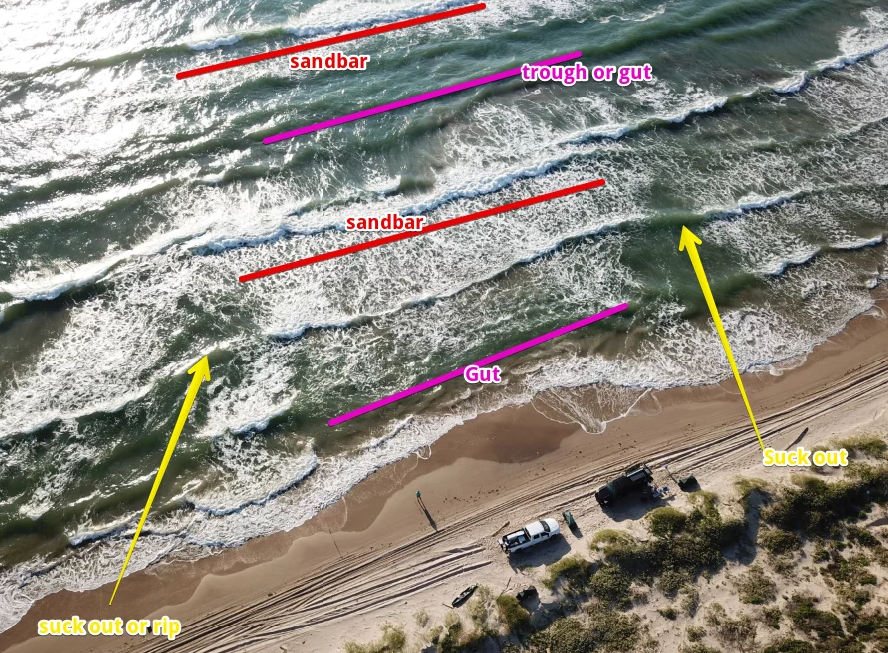
The beach is a dynamic environment where currents, sandbars, and troughs create a variety of structures and currents that steelhead navigate. First, you need to locate a beach near a river inlet or tributary. But then, reading the surf to identify where steelhead are likely to be holding is a crucial skill.
Identifying where steelhead might feed or hold in the surf can dramatically improve your success. Start by observing the waves. Breaks that occur in a consistent pattern may indicate a sandbar, where steelhead often chase baitfish.
There are subtle cues you shouldn’t miss. For instance, a change in the color of the water could signify a drop-off, a prime spot where steelhead might lurk. Pay attention to birds diving into the water; they’re likely feasting on the same baitfish that steelhead prey upon.
Tides are critical when surf fishing for steelhead. During incoming tides, steelhead are known to move closer to shore, feeding aggressively. Conversely, during low tides, focus on deeper troughs or guts where fish seek refuge. Always be mindful of how the changing tides and currents reshape the underwater landscape; it’s never exactly the same from day to day.
Strategies for Steelhead Hotspots Along the Surf

If you’ve read this far, I trust you’re equipped with the essentials and excited to hit the shoreline. Locking down the right spot is your next move. While steelhead could be widespread, certain locations are more promising than others.
Once you’re at the seaside, look for rivers or estuaries emptying into the ocean. Steelhead often linger around these freshwater sources, especially when prepping to spawn. Additionally, keep an eye out for areas with significant structures such as jetties, rock piles, and submerged vegetation—steelhead use these as cover and hunting grounds for smaller fish.
Do your homework before you drive out to the coast. Check with the locals for the latest intel on where you are likely to find steelhead along the beach. Research and local knowledge can make or break your outing. Online forums, fishing reports, and data from wildlife agencies can point you to the most likely beaches.
Some Top Locations to Try Surf Fishing for Steelhead
- Washington State: Explore Washington’s Fort Casey State Park or the shoreline of Whidbey Island, for saltwater steelhead opportunities.
- The river inlets and tributaries of Alaska’s Kenai Peninsula.
- The Oregon Coast, particularly the shorelines adjacent to the Rogue River inlet.
- The Delaware River area of New York can be a great spot for surf fishing for steelhead.
- Lake Erie: The beaches of the Great Lakes can produce some impressive surf at times. Fishing the beaches of Lake Erie for steelhead can be excellent.
Surf Fishing for Steelhead Key Takeaways
Remember, patient and observant anglers often reap the most rewards. Monitor how the fish respond to different tactics and be ready to adjust your approach if necessary. The surf zone is a very dynamic environment and what works one day might not the next.
CONSISTENCY is key. The more you trips you make surf fishing for steelhead the more you will improve your understanding of the local waters and increase your chances of success.
Record your observations each trip; soon, you’ll see patterns emerge that will help you determine more effective fishing strategies. May your casts reach new distances, your hooks find their mark, and your surf fishing for steelhead adventures be fun, educational, and SUCCESSFUL.
As always, stay safe, enjoy the journey and please try to leave it cleaner than you found it. If you have any comments, questions, ideas, or suggestions please leave them in the comment section below and I’ll get back to you ASAP. You can follow us on Facebook: Rex The Beach Angler, Instagram: thebeachangler7, Twitter: @AnglerBeach, and YouTube: Man Art Creations.
Check Out Our Latest Articles:
- 6 Top Features of Okuma Hakai Baitcast Reels
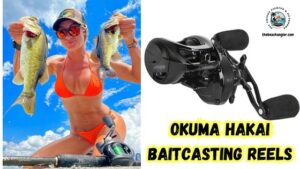
- The Daiwa Lazy Fashad

- Fishing For Pacific Coast Rockfish and the Challenges they Present
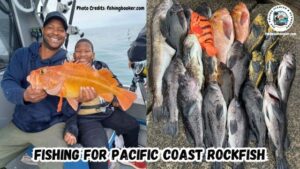
- Z-Man Big BallerZ
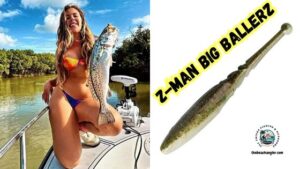
- 6 Tips for Choosing The Right Waders For Saltwater Fishing
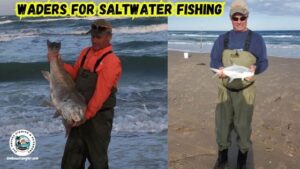
- Piscifun Salis X Trolling Reel Conventional Level Wind Reel
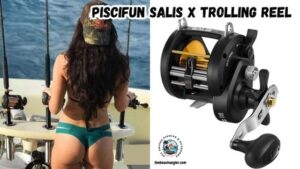
P.S. – Thanks so much for checking out our blog we really appreciate it. Just so you know, we may receive a commission if you click on some of the links that appear on our site. This helps us keep our content free and up-to-date for everyone. We appreciate your support!
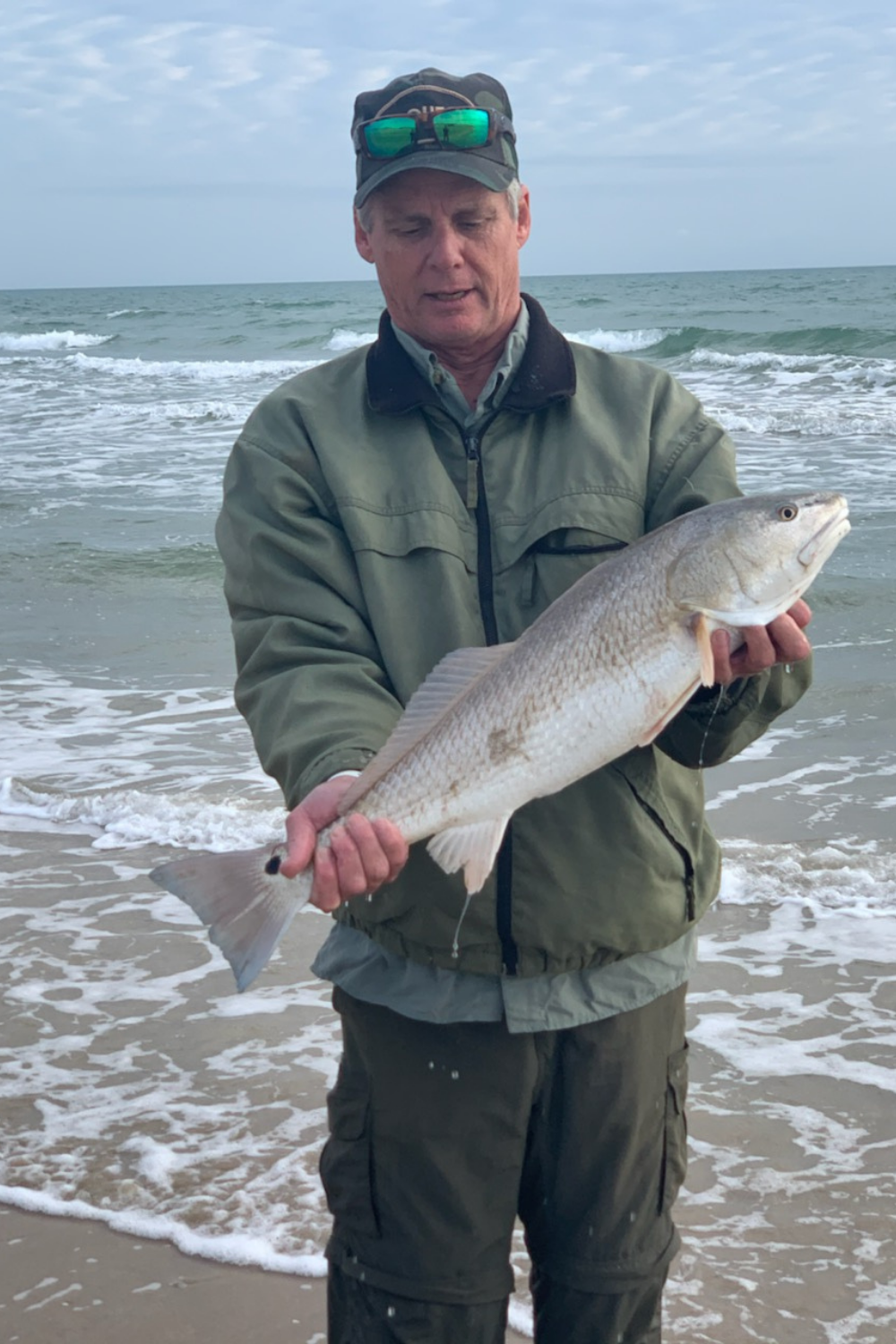
A life long surf fisherman with 50+ years of experience, I am also an avid hunter and outdoorsman. I will be sharing my passion for the outdoors with you so be prepared for hunting, fishing, camping, hiking and more. Along with gear reviews and the latest trends and innovations in the outdoor industry.
